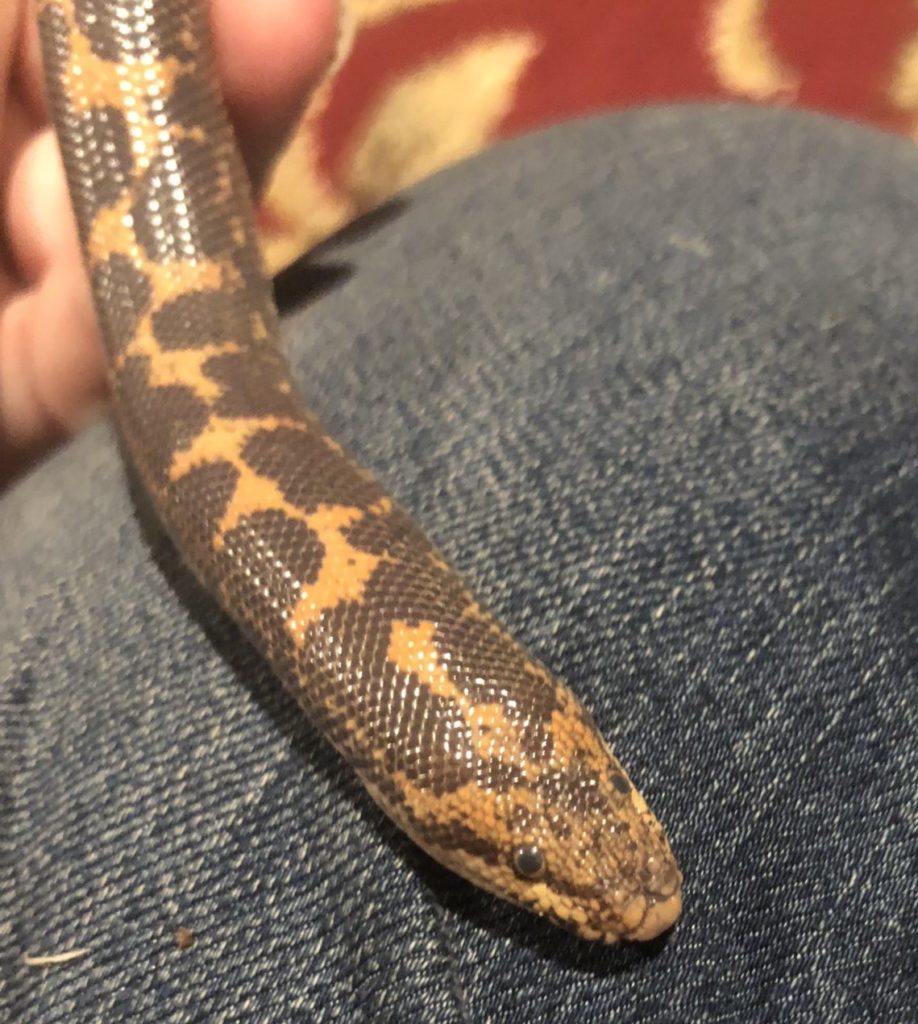Genus: Eryx or Gongylophis
Gongylophis: Kenyan, Rough scaled, and Saharan sand boas
Eryx (old world sand boas):

The Old World Sand Boas include 9 recognized species of Eryx hailing from Europe, Africa, the Middle East and Southwestern Asia, though most commonly found in the pet trade is the Kenyan (E. colubrinus).
The Kenyan Sand Boas are very “tubelike” in appearance with no distinct neck. The nose is very short and wide and they have very small eyes with vertical pupils. Their tails are also short and don’t have the ability to curl around and hold on like those of most other snake species her at Snake Haus. The females are usually larger than the males, but even they rarely get any bigger than 2 feet long, making them a good reptile for somewhat smaller spaces.
These animals can be very destructive with burrowing through their enclosures though and will tip over small water bowls. For this reason, heavy crocks are recommended. Also, be careful of large cage decorations that could crush your boa should they burrow under it. These guys will spend 75-80% of their time in burrows in their substrate, so don’t worry about making the enclosure pretty for them. What, you want to look at you Sand Boa? Well, that’s a different story.
Old world boas are a bit unique in that they are ovoviviparous, meaning they give birth to live young instead of laying eggs. Actually, it’s a little more complicated than that. They do still produce an egg of sorts, but the mother snake retains the egg for development and the babies are passed 4 to 6 months later, fully formed, each in an individual membrane.
These awesome little snakes are still a bit new to the pet trade, but are quickly growing in popularity and we do have some pretty awesome looking morphs out there now.
Meet Snake Haus East’s Sand Boas here!

